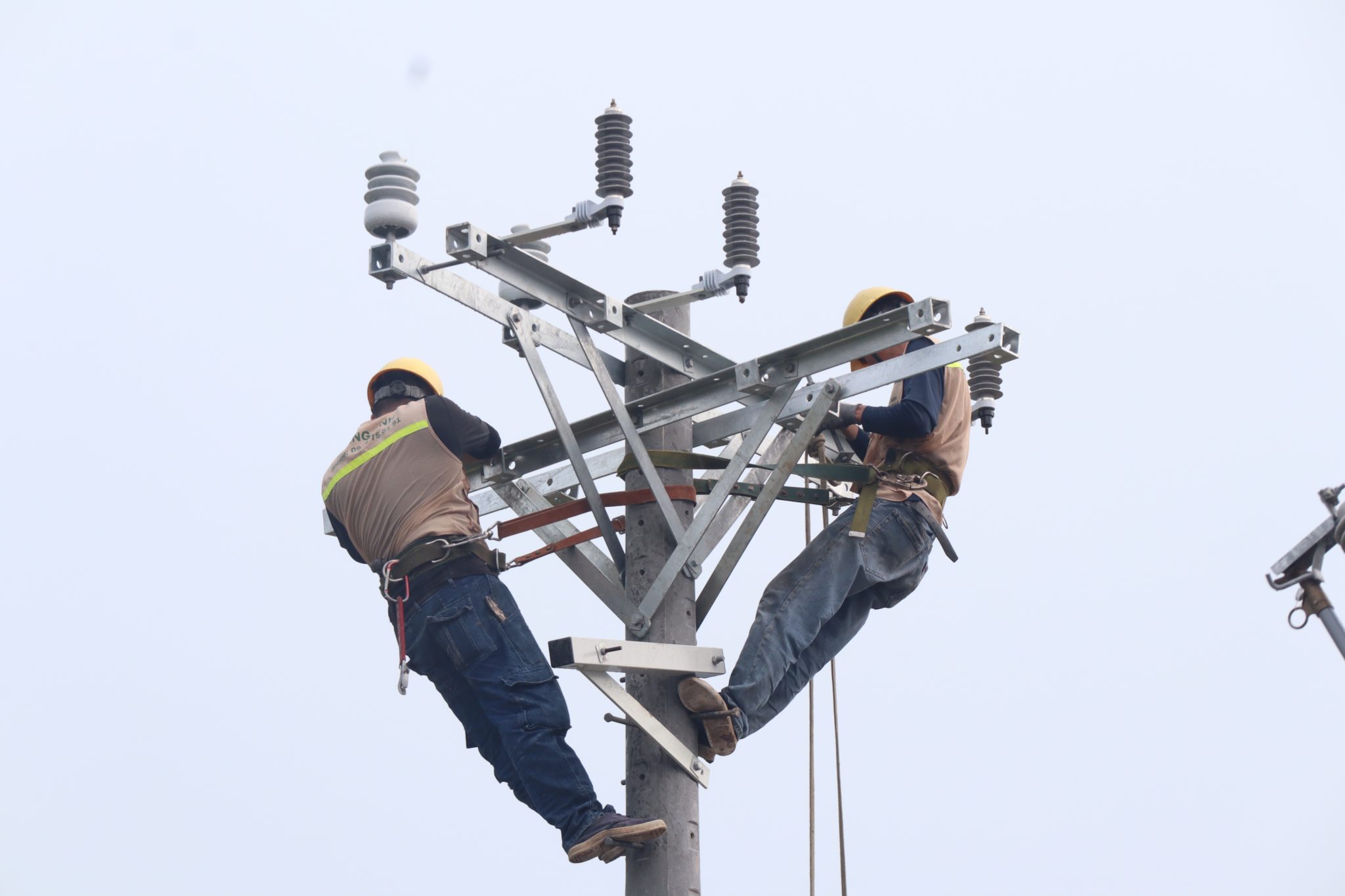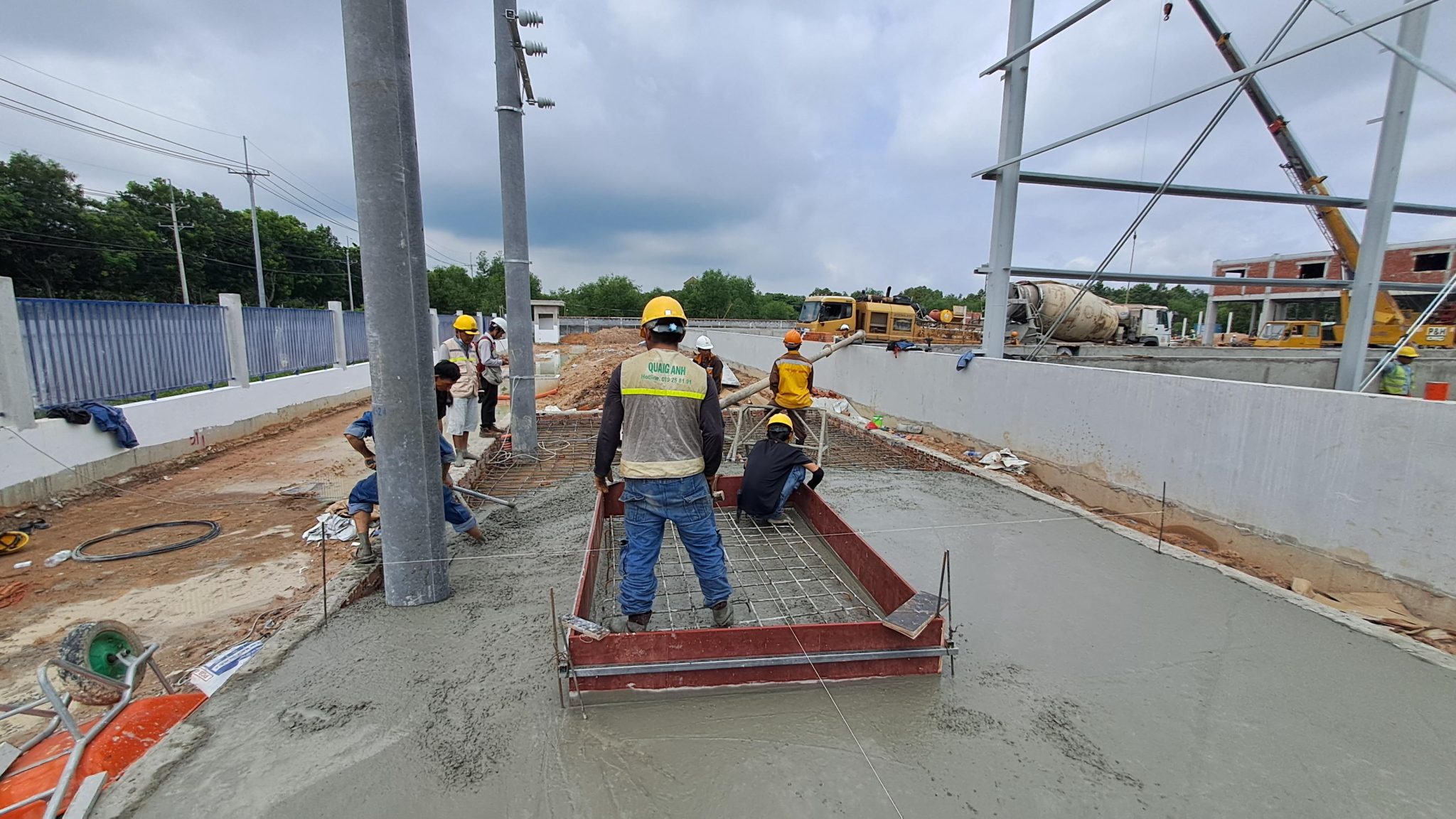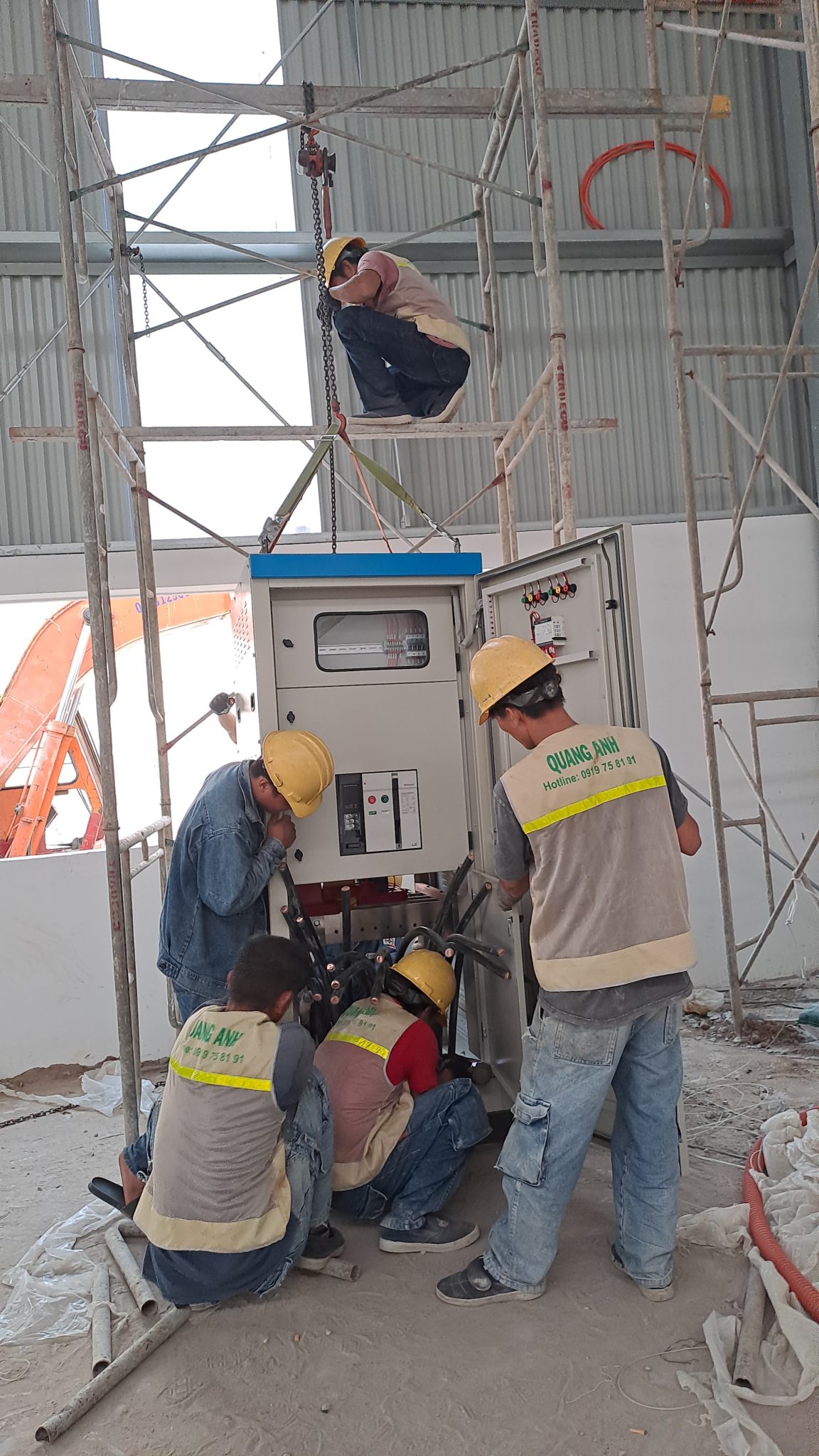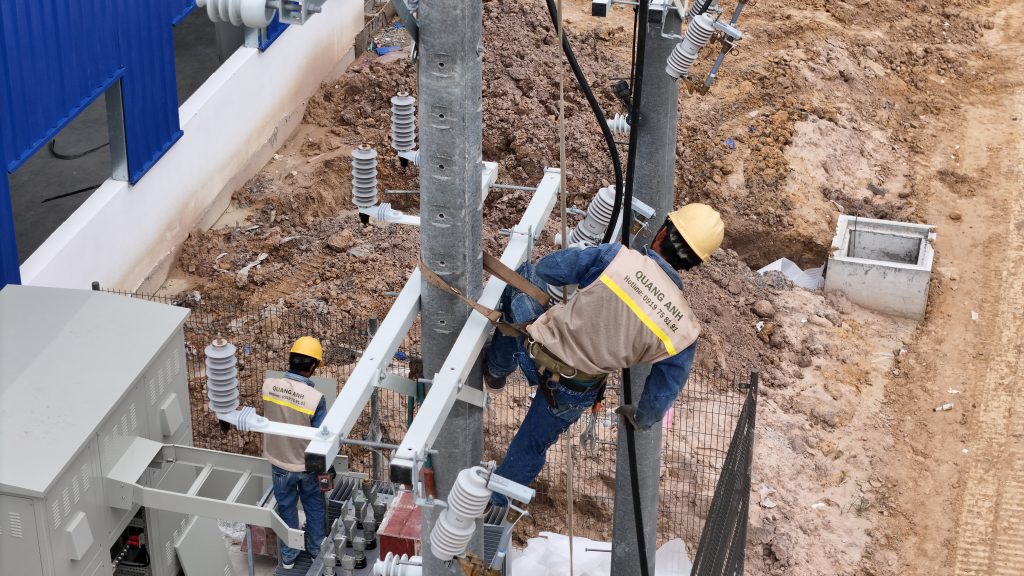News
Industrial Electrical System Construction: Optimal Safety and Performance
Industrial electrical system construction is a crucial phase that directly impacts the effective and safe operation of factories and enterprises. The industrial electrical system includes the design, installation, operation, and maintenance of various electrical systems in the workshop.
Main Power Cable System Construction
Construction of industrial electrical systems begins with handling the main power cable system, which plays an important role in supplying power to all equipment in the workshop. Conductors need to be scientifically selected, suitable for total capacity and each piece of equipment to ensure safety and operational efficiency. The installed cables can be exposed on rack mounts or embedded in underground conduits. This requires precision in connections and protection of joint connections from water and moisture, especially when embedded in PVC plastic pipes.
Main Power Cable System Construction is an essential process in ensuring optimal power supply and performance for workshops. In this segment, the installation of main power cables needs to be carried out through a series of careful and meticulous steps.
The standard construction process includes:
- Survey and Design: First, conduct a site survey to determine specific requirements and the ideal installation location. Design the main power cable system diagram with detailed 2D or 3D drawings.
- Choose Cable Cross-section: Calculate the load capacity to select the appropriate cable cross-section. This ensures the cables can handle the load, optimizing electrical safety and efficiency.
- Installation: This construction phase requires the installation of underground PVC cables or overhead cables from the substation to the main electric panel, ensuring firmness and safety.
- System Connection: This is an important step to complete the system, connecting cables to the main circuit breaker MCCB and main switchboard MSB, ensuring the system is correctly and safely electrically connected.
The cables can be installed underground (PVC or metal for protection from harsh environmental elements) or overhead (on utility poles, mounts, suitable for open spaces).
To ensure the stability and safety of the main power cable system, regular inspections and maintenance are necessary. This helps early detection of potential issues and maintains optimal performance of the construction process.
Constructing the main power cable system not only ensures safe power supply for workshops but also optimizes efficiency and minimizes risks during operation.

Cable Tray Ladder Installation
An integral part of industrial electrical system construction involves the installation of cable tray ladders. They help direct and protect electrical cables, ensuring electrical safety and facilitating maintenance. The quality of cable tray ladders must be ensured by using specialized machines for cutting and managing, and the support rods must be fixed and aligned. The standard height should be below 1.5m to allow ease of access for personnel when needed.
Cable tray ladder installation is a crucial step in managing cables and ensuring necessary safety standards in electrical construction.
-
Step 1: Preparation and Inspection
- Prepare and ensure the necessary tools and supportive equipment for the installation process.
- Inspect drawings and design to determine the detailed location and technical requirements of the cable tray ladder system.
- Check machinery to ensure readiness and stable operation.
-
Step 2: Cutting and Processing Cable Tray Ladders
- Measure and cut cable tray ladders to the appropriate size, adding 5cm to each section for easy adjustment.
- Use equipment to smooth burrs to ensure occupational safety.
-
Step 3: Determine Cable Tray Ladder Route
- Identify the installation route to efficiently manage cables practically.
- Mark points to attach supports with high precision, using a pen or specialized equipment.
-
Step 4: Fixing the Supports
- Drill holes and fix supports onto a sturdy wall or floor surface.
- Install conversion kit frames, ensuring the hooks face down for safety and stability during installation.
-
Step 5: Installing Cable Tray Ladders on Supports
- Begin installing from the terminal ends, corners, and branches first, finally the straight sections.
- Ensure cable tray ladders remain firmly on the conversion kit frames.
-
Step 6: Grounding
- Fix grounding wires to the cable tray ladder and check for safe grounding points.
- Ensure safety standards in the installation system of cable tray ladders.
-
Step 7: Inspection and Testing
- Inspect the entire installation process to confirm compliance with technical standards.
- Conduct system testing ensuring safe and efficient operation before putting it into use.
An important note is to ensure all cable sections are securely fastened to the cable tray ladders with plastic ties at optimal distances of 3m to 1.5m to maintain system quality and efficiency.

Lighting and ELV System
The industrial lighting system must ensure adequate lighting, safety, and energy conservation with industrial lights, pathway lights, and emergency lights. Concurrently, the ELV system such as fire alarms, security cameras, and internal networks must be integrated to ensure the continuous and efficient operation of the entire electrical system. These systems play a vital role in maintaining security and stability in workshop operations.
In the context of construction development in Vietnam, industrial lighting systems and ELV systems have become indispensable components.
ELV System (Extra Low Voltage System)
The ELV system is an important part of the construction electrical system; however, it does not operate like the main electricity. This system includes industrial LAN networks, security cameras, cable televisions, and video conferencing. The voltage used in the ELV system typically ranges from 35V AC to 60V DC, a voltage level minimizing workshop security risks. The role of this system is crucial in enhancing the quality and class of the construction despite being a small proportion of the total project.
Lighting System
The lighting system is part of the ELV and provides necessary lighting for the construction space. Main components of this system include fluorescent lights, LEDs, halogens, and incandescent bulbs. For production workshops, the integration of these industrial lighting types is mandatory to ensure effectiveness and safety in labor.
Comparison Between ELV System and Lighting System
| System | Description | Voltage |
|———————–|—————————————————————————————————————————————————–|————|
| ELV System | Includes systems such as industrial LAN networks, cameras, cable television…[2][3] | 35V AC – 60V DC |
| Lighting System | Is part of the ELV system, providing lighting for spaces. | Usually 220V |
Both systems are indispensable in enhancing the quality and ensuring the smooth operation of construction projects. Where the ELV system supports modern ELV technologies, the lighting system ensures light provision for daily production activities.

Industrial electrical system construction requires precision and high professional knowledge to ensure safety and efficiency. Investing in a quality electrical system not only helps increase productivity but also protects long-term assets for industrial workshops.
To ensure your industrial electrical system is constructed to standards, contact QuangAnhcons at hotline: +84 9 1975 8191 today.
QuangAnhcons provides professional industrial electrical system construction services, ensuring the highest performance and safety for your business from design, installation to comprehensive maintenance.

 Tiếng Việt
Tiếng Việt 简体中文
简体中文 Deutsch
Deutsch 日本語
日本語 한국어
한국어 ไทย
ไทย Русский
Русский Français
Français
